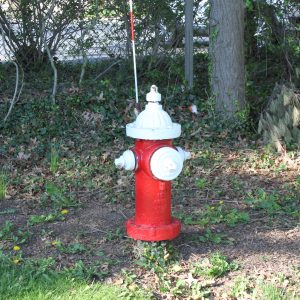As the Plainview community prepares for snow in the forecast as we jump into the colder months, the Plainview Water District (PWD) would like to remind its residents about the importance of keeping fire hydrants clear. Ensuring hydrants remain free of snow and any other winter debris can save first responders valuable time during their response to an emergency situation.
“The winter weather arriving always provides us with an opportunity to remind our residents and local business owners of the importance of keeping hydrants clear,” said PWD Chairman Marc Laykind. “Making sure the fire department has quick and easy access to fire hydrants at all times saves precious moments that should be used to responding to an emergency.”
Residents can “adopt” a nearby fire hydrant to pledge responsibility for reporting issues and making sure it kept clear during snowstorms. Clearing approximately three feet around the hydrant will provide both firefighters with uninterrupted access in case of a potential emergency. This provides plenty of room for the emergency personnel to operate the device as well as locate it.
“You never know when or where an emergency is going to occur so never assume that they fire hydrant in front of your home won’t be needed,” said PWD Commissioner Andrew Bader. “We also encourage residents to never assume someone else will clear the hydrant so please communicate with your neighbors to ensure it is cleared in a timely fashion.”
In addition, the Plainview Water District asks residents to also consider assisting neighbors, family members and friends who are unable to clear their own fire hydrants without assistance. Residents who leave their homes for the winter season are asked to notify a neighbor who can make sure someone is responsible for clearing it in their absence.
“The safety of our community is always our foremost priority, which is why we are so emphatic about making sure this simple yet vital step is not overlooked,” said PWD Commissioner Amanda Field. “We appreciate the attention of our residents on this simple, yet crucial, task.”
If you have questions about preparing your home’s water system for the winter or general inquiries about your water service, please call 516-931-6469 or send an email to info@plainviewwater.org. Customers of the Plainview Water District are also encouraged to sign up to receive updates by visiting www.plainviewwater.org. Follow the Plainview Water District on Facebook at www.facebook.com/plainviewwater.


 When maintenance is being performed residents in the immediate vicinity of the work may experience temporary discoloration of their water. This discoloration primarily consists of harmless rust particles and does not affect the safety of the water. If you experience discoloration in your water after crews have been testing hydrants in your neighborhood, it is best to run your cold water tap at the lowest point of your home for 2 minutes or until it clears up.
When maintenance is being performed residents in the immediate vicinity of the work may experience temporary discoloration of their water. This discoloration primarily consists of harmless rust particles and does not affect the safety of the water. If you experience discoloration in your water after crews have been testing hydrants in your neighborhood, it is best to run your cold water tap at the lowest point of your home for 2 minutes or until it clears up.
